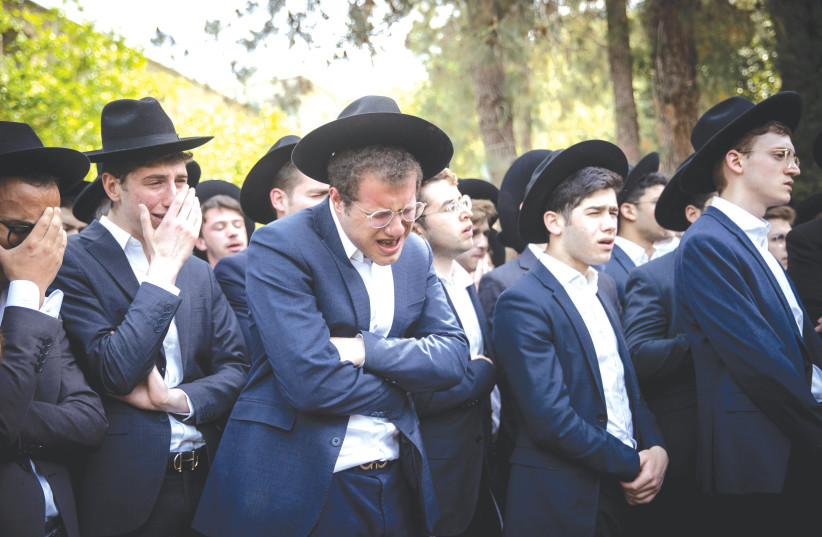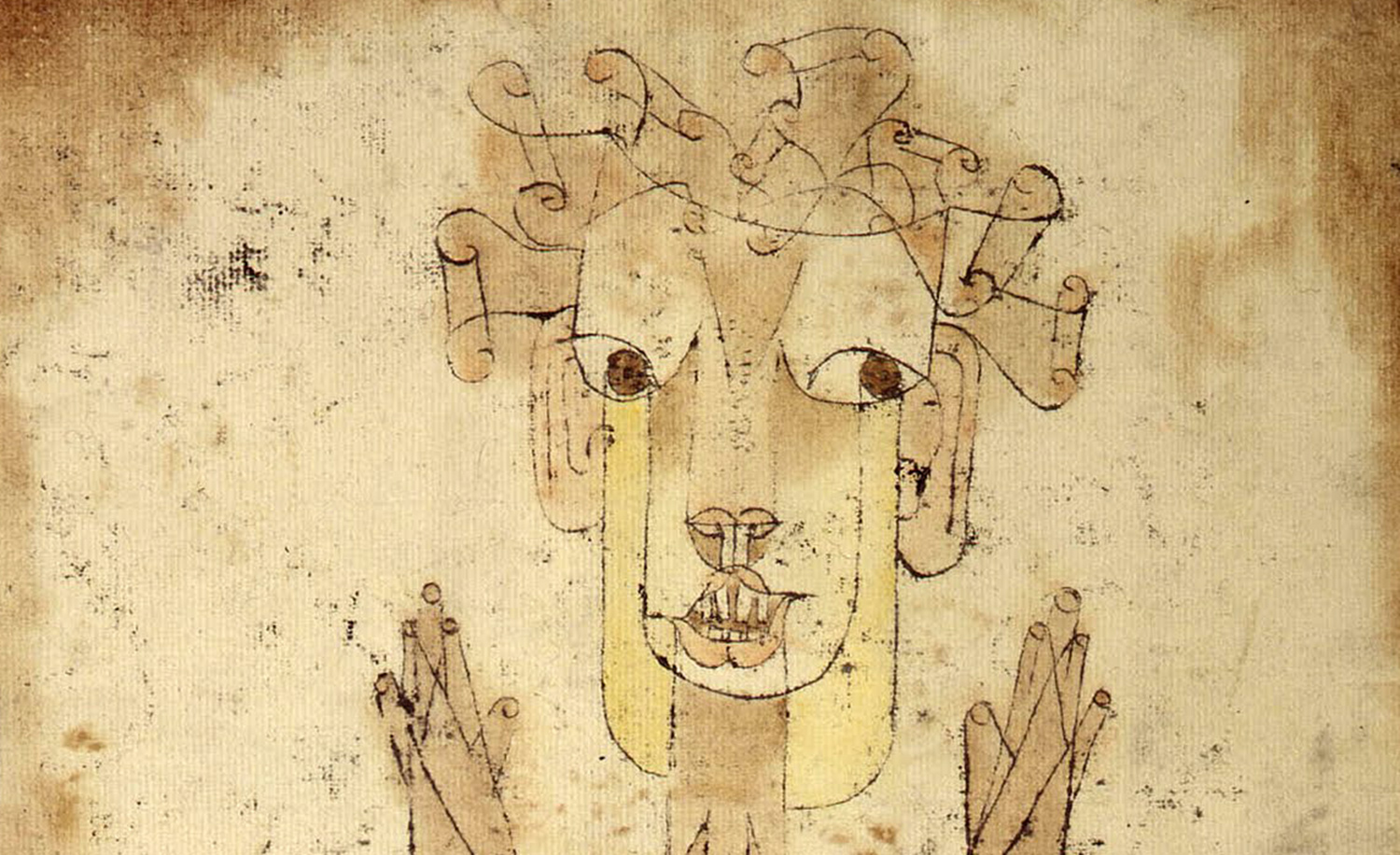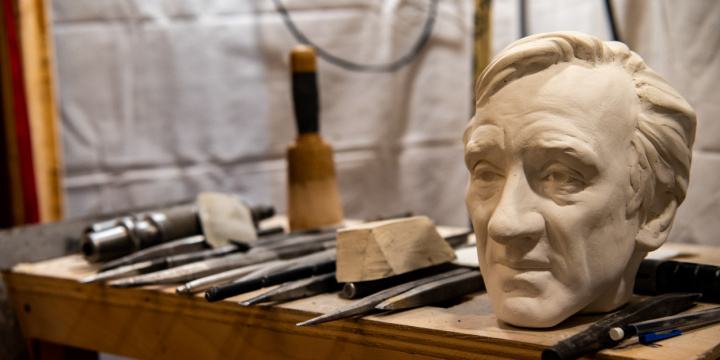The shock of Friday’s catastrophe at Mount Meron is still raw.
The graves of the victims, including the children killed in the crush,
are still fresh. Yet the debate over what it all means for the country
and for Haredi society has already begun.
A few overpowering facts, not least that nearly all the victims
were Haredi, are driving an unusual new introspection, and leading the
major media outlets of the community to turn against one of its
characteristic traits: its longstanding and much-criticized “autonomy”
from the Israeli state.
Haredi Israelis are simultaneously part of and apart from broader
Israeli society. Making up as much as 12 percent of the Israeli
population, the community is not uniform; different sects and
subcultures interact in very different ways with the state and with
other subgroups. While the “autonomy,” as Israelis often refer to the
phenomenon, does not encompass all Haredim, it encompasses enough of the
community to be — so growing numbers of Haredim now believe — a serious
problem.
One sees the autonomy in studies of Israel’s cash economy that point
to mass tax evasion in the Haredi community; in routine clashes with
police in parts of Mea Shearim, Beit Shemesh, and other places; in the
refusal to take part in national service; in school networks that refuse
to teach the basic curriculum taught in non-Haredi schools; and, most
recently, in the refusal of many Hasidic sects over the past year to
obey pandemic lockdowns.

Ultra-Orthodox Jews gather at the
gravesite of Rabbi Shimon Bar Yochai at Mount Meron in northern Israel
on April 29, 2021, as they celebrate the Jewish holiday of Lag B’Omer.
It is a community that talks about itself in the language of
weakness, always a street scuffle or political squabble away from talk
of “decrees,” “persecution,” and “antisemitism.” Proposals for welfare
cuts or calls to introduce more math education in their schools are
described in Haredi media in terms borrowed from czarist oppression in
Eastern Europe.
That rhetoric of weakness and victimhood has a purpose: to cloak
or perhaps to justify the opposite reality. As a group, Haredim are not
weak. They are powerful enough to constantly expand and defend their
separate school systems, to found towns and neighborhoods for their
communities, to maintain a kind of self-rule that forces Israeli
politicians to literally beg Haredi rabbinic leaders — usually
unsuccessfully — to adhere to coronavirus restrictions.
The story of the Meron disaster cannot be divorced from this
larger story of Haredi autonomy, from the Haredi habit of establishing
facts on the ground that demonstrate their strength and independence,
and then crying “persecution” when those steps are challenged.
The strange meaning of ‘spontaneous’
In the two days that have passed since the disaster, investigators
and journalists have uncovered a despairingly long litany of warnings
from past years about the safety problems at the Meron site. State
comptroller reports, police site analyses, dire admonitions by earnest
safety officials in Knesset hearings — all fell on deaf ears.
These records reveal that if the Mount Meron site had hosted any
other kind of event — a rock concert or a political rally — then police
safety regulations would have limited attendance to roughly 15,000
people. Friday’s event saw more than 100,000 in attendance.

Men covered with prayer shawls at Rabbi Shimon Bar Yochai’s grave in Meron. October 11, 2017 (David Cohen/ Flash90/ File)
They reveal, too, that Israeli officials simply do not believe it is
possible to demand such limitations from the Haredi community.
As one former senior cop told the Yedioth Ahronoth daily over the
weekend, “If a safety engineer from the police, in their last
inspection of the site before the commemoration, would have tried to
shutter the Toldot Aharon courtyard [where the disaster occurred] — do
you believe that decision would have been enforced? … Not even the chief
of police can do that. If someone tries, that’s their last job in the
police.”
Haredi political parties, acting at the behest of Haredi religious leaders, would have made sure of it.
As journalist Nadav Eyal noted in his Yedioth Ahronoth column on
Sunday, the Meron festival was officially classified by the police as a
“spontaneous religious event.” It’s a preposterous term for the
gathering. It’s not just that the Lag B’Omer festival takes place in
highly non-spontaneous fashion on a known holiday (i.e., Lag B’Omer) but
it also constitutes the largest annual religious gathering in the
country.
Months of planning go into it. Its many different lots and bonfire
ceremonies and musical performances are carefully divvied up among the
competing sects and religious endowments that run the pilgrimage.

Thousands of ultra-Orthodox Jews
celebrate the lighting of a bonfire during celebrations of the Jewish
holiday of Lag B’Omer on Mt. Meron in northern Israel on April 29, 2021.
The government spends a small fortune each year on stages,
grandstands and chartered buses from Haredi towns. And each year, a
half-dozen government agencies all try to take credit.
So when police label the event “spontaneous,” they do not mean that
it is literally spontaneous. It is a way to acknowledge that the police
have no control over the event, that they could not impose attendance
caps or infrastructure standards even if legally required to.
On Thursday, hours before the disaster, Interior Minister Aryeh Deri
bragged to the Haredi radio station Kol Hai that he had successfully
prevented Health Ministry officials from limiting the number of
attendees over coronavirus fears. Deri lamented that the professional
echelon at the ministry did not grasp that attendees would be protected
by the spiritual influence of Rabbi Shimon Bar Yochai, the
second-century sage commemorated at the Meron festival.

Shas party head Aryeh Deri casts his vote in the general elections in Jerusalem on March 23, 2021.
“The government clerks don’t understand,” he said. “This is a holy
day, and the largest gathering of Jews [each year].” Bad things, he
suggested, don’t happen to Jews on religious pilgrimage: “One should
trust in Rabbi Shimon in times of distress.”
Even as he bragged of his and the Haredi community’s political power,
he then deployed, instinctively, the rhetoric of victimhood. He urged
listeners “to pray for the world of Torah and for Judaism, which are in
danger. They’re in great danger.”
An end to the autonomy?
Children were crushed to death at Meron. Hardened paramedics wept on
television. When cellular networks on the mountain went down, fearful
families were reduced to sharing photographs of their missing loved ones
on social media in a desperate attempt to make contact. One rescuer
described to reporters the moment he had to yell at a tormented
colleague to stop trying to resuscitate a child: “It was hopeless, and
we had to try to resuscitate others.”

Rescue forces and police at the scene
after a mass fatality scene during the celebrations of the Jewish
holiday of Lag B’Omer on Mount Meron, in northern Israel on April 30,
2021.
No complaint from secular Israel could make Haredi society question
the strange autonomous bubble it had constructed as a cultural defense
against the state’s modernizing influence, nor the power of the Haredi
rabbis and their courts, whose egos and squabbles had divided the holy
site into disconnected courtyards and helped drive Friday’s deadly
chaos. But the shattering images from Meron cut through the glib
self-assurance and silenced, at least for the moment, any boasts about
Haredi self-rule.
And as the confident voices dwindled into shocked silence, other
voices came to the fore, cries of angry self-critique that are rarely
heard from the mainstream of Haredi society.
The voices all carried a single message: The state’s kowtowing to our leaders has brought this disaster upon us.

A hat at the scene of a deadly crush
during the Jewish holiday of Lag B’Omer on Mt. Meron, in northern Israel
on April 30, 2021
Yossi Elituv, editor of Mishpacha, the largest-circulation Haredi
weekly, urged his followers not to focus only on police errors or lack
of government oversight.
“Our community also has a duty to learn lessons,” he wrote on Friday.
The first lesson: That the state must step in and end the chaos. “Our
first and immediate task is to free the mountain from the control of the
[religious] endowments…. The state needs to establish a professional
authority to run the site….Take the mountain away from the endowments
and confer on it the status of the Western Wall, with zero tolerance for
rule-breaking.”
On Sunday morning, Elituv followed up with a four-word tweet: “State investigative committee, now!”
Moty Weinstock, an editor at the Haredi weekly Bakehilla, reached the same conclusion.
“Any solution at Meron that amounts to less than bringing order to
the entire mountain, canceling the religious endowments and dismantling
all the areas designated [to specific sects] will ensure the horrifying
images come back,” he declared.
On social media, in other newspapers, including the Hasidic mainstay
daily Hamevaser, and in countless media interviews, Haredi Israelis
asked the same questions and leveled the same complaints.

Top row (L-R): Menahem Zakbah, Simcha
Diskind, Shraga Gestetner, Shimon Matalon; 2nd row (L-R): Moshe Natan
Neta Englard, Yehoshua Englard, Yosef David Elhadad, Moshe Mordechai
Elhadad; 3rd row (L-R): Haim Seler, Yedidia Hayut, Daniel (Donny)
Morris, Nahman Kirshbaum; 4th row (L-R): Abraham Daniel Ambon; Yedidya
Fogel, Yisrael Anakvah, Moshe Ben Shalom
A community that had convinced itself it could flout the demands of
state authorities has suddenly and with growing confidence and
earnestness begun to cry out for “order” and “authority,” to demand that
the state impose its control, the rabbinic courts’ pride and vanity be
damned.
New assumptions
Contrary to its most basic claim about itself, Haredi Judaism is
neither rigid nor unchanging. New ideas filter in, old ones are
reinterpreted. Scholars of Haredi life speak of profound changes across a
broad spectrum of cultural and social mores, from a growing number of
Haredim in higher education, in the workforce and in the military to new
roles for women and new political loyalties that are collectively
driving the community into ever deeper integration with mainstream
Israeli society.
Yet change requires one underlying condition: It must happen quietly.
Assumptions shift unacknowledged, new practices are treated as old and
commonplace.
Take Haredi Zionism as an example. Ten years ago, the Shas party
formally declared itself a Zionist party and joined the World Zionist
Organization. But the declaration was whispered, not shouted. Today, no
Shas voter would believe that until a decade ago the party would not
officially call itself Zionist and had avoided joining Zionist
institutions.
It’s the same story on the Ashkenazi side. Twenty years ago,
Ashkenazi Haredim in Israel refused to acknowledge the ceremonies
conducted at military cemeteries on Memorial Day. The military rituals
were borrowed from other nations, they complained. Jews must commemorate
in their own ancient ways. Then, over the course of the past decade,
without fuss or fanfare or explicit acknowledgment of any kind, United
Torah Judaism politicians have taken to officiating at those very
ceremonies as official representatives of the Israeli government,
standing alongside pants-clad female soldiers and laying wreaths at
concrete memorials.
Haredi society can change with the times, as long as it does not admit the change aloud.

Ultra-Orthodox Jews wearing prayer shawls
gather next to a bonfire, as they take part in prayers next to the
grave of Rabbi Shimon bar Yochai during Lag B’Omer celebrations at Mt.
Meron in northern Israel, early Thursday, May 10, 2012
In 2018, just after he took part in that year’s Lag B’Omer pilgrimage
to Meron, Haredi journalist Aryeh Erlich tweeted his concerns about a
certain narrow walkway at the site: “The narrow exit path that leads
from the bonfire ceremony of the Toldot Aharon [Hasidic sect] creates a
human bottleneck and terrible shoving, to the point of an immediate
danger of being crushed. And it’s the only exit…. They must not hold the
bonfire at that site again before they open a wide and well-marked
exit.”
Erlich’s tweet went viral on Friday, exactly three years too late.
In an interview Sunday with the Tel Aviv-area radio station 103 FM
about the disaster he predicted so precisely, Erlich rejected any blame
directed at Haredi society for the deaths.
“How can you blame the Haredi public?” he demanded. The Meron pilgrimage “is a tradition that’s been going on for 550 years.”
Then who was to blame? “It’s the police that approve the event. There
are clear regulations. No event can take place without a safety
officer, a policeman who signs off on it and approves it, and that’s
what happened at Meron.”
There’s a “sovereign,” he added. That sovereign “decided to ignore
[the danger], chose shoddy improvisation instead, and failed to impose
safety standards. The Haredi political parties are victims here; it’s
not serious for the police to now say that because of [the Haredi
parties] they didn’t do what they were supposed to do. The police are
supposed to enforce the law.”

Israeli rescue forces and police at a
mass fatality scene during celebrations of the Jewish holiday of Lag
B’Oomer on Mt. Meron, in northern Israel on April 30, 2021.
It is a pivot in expectations that by its very denial of Haredi
culpability signals the shift away from Haredi autonomy. Erlich couches
his critique as a defense of Haredi political leaders. But even here,
with the blame directed exclusively at the Israel Police, the argument
is the same: The police no longer have the right to ignore safety rules
merely because Haredi religious sects demand it. How dare the state risk
the lives of its Haredi citizens by allowing Haredi autonomy to trump
their safety?
The catastrophe at Meron will not lead any in the community to
question other elements of its separate existence, such as its
independent school system. Nothing so fundamental will change from a
single tragedy.
But those now asking the state and the police to take
over at Meron, those now questioning, openly and not-so-openly, their
leaders’ wisdom and their community’s ethos of separation, will apply
that lesson to other things in the future.
https://www.timesofisrael.com/after-meron-calamity-haredim-question-the-price-of-their-own-autonomy/?utm_source=The+Daily+Edition&utm_campaign=daily-edition-2021-05-03&utm_medium=email























